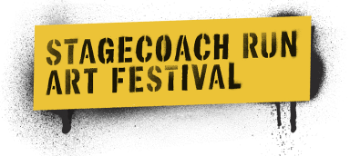Route 14 is a beautiful, meandering country road famous for its spectacular views and glorious nature. You really don’t need another excuse to go there. However, on the weekend of July 1st and 2nd a perfect excuse is what you get. An excuse called The Stagecoach Run Art Festival. An excuse that consists of more than 60 artists, showing their work in 23 venues on and around Route 14 with Treadwell as its principle art hub.
This year is the 22nd time that the Stagecoach Run Art Festival gets organized. And it is not surprising that this beautiful Art Festival in the foothills of the Catskill Mountains has survived so many years. There are many artists living in the region and likewise there are many art lovers. The Stagecoach Art Festival brings them together once a year for the pleasure and enjoyment of all.
So what can you expect from a big Art Festival with so many of its contributors living in the same area. Here are six (out of the many) things that you can look for.
- Grand diversity
There is no dominant vision about art, trend or style that all artists abide to. This is true for the art world in general, and it is also true for the artists living on or around Route 14. Nowadays artists are by themselves. They decide what to create, where to create it and how. Nobody is telling them what to do. It makes being an artist a very free profession, but at times also a very lonely profession. - Painting still prevails
In spite of the rise of new media, at the Stagecoach Run Art Festival painting remains the dominant discipline. Within the realm of painting, however, the diversity is again tremendous. From classical landscapes (Elissa Gore) and buffaloes (Frank Anthony) to city scenes (Joan Dworkin) and motor cycles (Bruce Goddard). And even within a subject such as landscapes the work of artists like Jane Carr, Sandra Finkenberg, Gail Bunting and Richard Kathmann are distinctly different, while all are being inspired by the same Catskill outdoors. Have a look at the still lifes of Judith Lamb and Sondra Freckelton, and feel the different sensibilities. How still can a still life be? - Figuration and abstraction
Most visual art is neither figurative nor abstract. In this time of individualism and diversity, the traditional boundaries are being challenged all the time. Most figurative work has abstraction built into it and most abstract work is figuration based. Look at the work of Christine Alexander, Bill Lee and Terry Fox. All examples of how the world of reality overlaps with the world of abstraction. - Unexpected explorers
Some artists work differently. Their work is unexpected because they use materials in an unconventional way. Be surprised by the photographic work of Charlie Bremer. Is this photography as you (used to) know it? Experience the color treatment of Marie Cummings. How are these special color nuances created? Gaze at the amazing wood sculptures by Stefanie Rocknak . Is this still wood? - Spot the lone wolves
And then, as always in a group of artists, there are the mavericks, the ones who defy all classification. Douglas Jamieson’s fantasy world, the playful abstractions of Simone Mantellassi and the cartoonish explorations of Edmond Rinnooy-Kan - The Treadwell Museum of Modern Art
A category of its own, the museum is home to the sculptor-painter-printer Joseph Kurhajec. This multi-tasking artist –together with Jane Carr- was the grand initiator of The Stagecoach Run Art Festival. Walk into the museum and be in awe.
The Stagecoach Run Art Festival this year is as diverse and as extensive as it ever was. Excuse or no excuse, rain or shine it is a delightful opportunity to experience what’s going on in the arts in our region. Enjoy the art, enjoy the nature, enjoy the hospitality.
